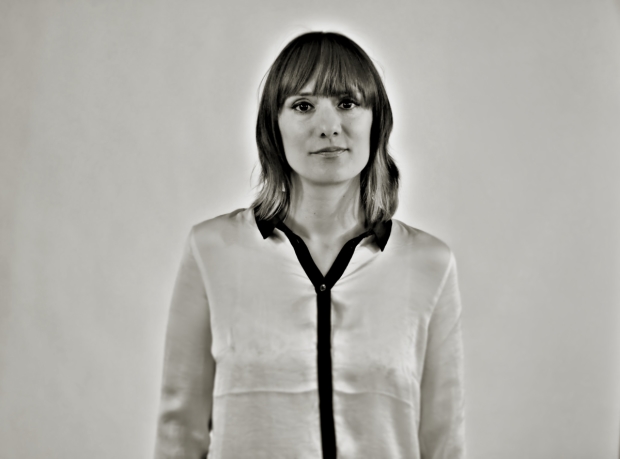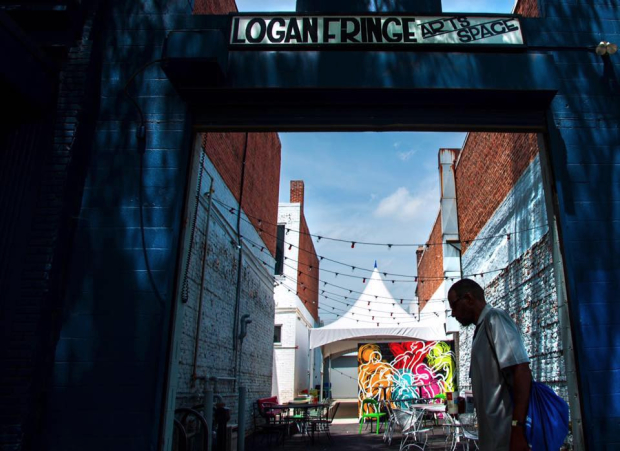After 10 Years of Audiences, New Beginnings for Capital Fringe
Two years ago, Julianne Brienza was hunkered down at Fort Fringe prepping for her eighth season as executive director of the Capital Fringe Festival in Washington, D.C. Now, she proudly runs a new base of operations in D.C.'s Trinidad neighborhood where the Fringe is planting roots that will (if all goes according to plan) fulfill Brienza's original vision for the nonprofit organization. Year-round programming that reaches beyond the annual summer festival is her main priority as she sets up shop at the Logan Fringe Arts Space, which celebrated its official opening in February. Bank loans and budgets are at the top of the to-do list for now, but looking beyond the haze of debt, Brienza offered TheaterMania a look into Fringe's creative future as a valuable, but distinctly non-"precious" part of D.C. culture.

Tell me about the Fringe's new space.
I had been here before when it was owned by ConnerSmith, a for-profit gallery. Before that it was an old car mechanics shop. I knew it was a cool building…So we ended up getting into the discussion of how to buy it. The whole thing just snowballed. In June of 2014 we put down a nonrefundable deposit of $350,000 from a foundation and we had to come up with the rest which was [around] $1.9 million. The building itself was $4.5 million. It was really crazy. It still is very intense.
Aside from the move, what kind of changes have been happening within the company over the past few years?
In the last five years of Fringe we have started doing a lot more things year-round. We were originally founded to be an arts organization and not a festival that happens one month out of the year, so those concepts are not new to us. But we are having to communicate them to people. We've built a really great community over the last ten years within the Fringe. A lot of companies have started with us, and we want to support that outside of the Fringe Festival.
How are you going about programming the season?
We're kind of changing it to be honest with you. When we first got the space it was just about filling it and making sure that we were illustrating that we just got this building for $4.5 million with donated funds and…how quickly we did it. We are ramping up for 2016, [and] we have decided that we're only going to do four theater productions for the whole year, not including the Festival. It's really about what kind of experience are you going to create in our space, which lends itself to that [theater] group knowing how to communicate that to their network and then us only enhancing it and making the voice about that show just a little bit louder and stronger.
We are [also] doing live music every Thursday…and all of our live music concerts are always free. [And] next year …a new festival. It's only four days. We're calling it Fringe Screen. It's basically going to be a ten-minute play festival and a short film festival mashed together. We're going to have people submit scripts and they'll be given certain parameters, very similarly to how you do improv. We'll give them the "who, what, when, where" and they'll also have the visual of "these are the backdrops you can choose from," and those will be designed by local artists.
How do you see Fringe fitting into the larger D.C. theater community?
The theater community in D.C. has changed a lot in the last ten years… how many major regional theaters do we have? Six to seven? But we probably have twenty to forty amateur or mid-level companies. A lot of those folks are doing three or four shows a year, bopping around venues. The more the community can be seen as a whole, the better. That's a lot of what we're trying to give space for here on a year-round basis. Whether it's for people to come and talk and hang out or to do a show or to even just get resources on other places to do shows.
Capital Fringe seems to be taking on a whole new identity since moving into its new space. Is that how it feels from your end?
It's weird, because these are not new ideas to me, but I guess we are. We are just becoming more year-round. I think people have definitely seen us as "The Festival." The stuff we do outside of the Festival…is really more about getting people to trust going to live performance as something that's not so precious. If people can understand the importance of arts or just live entertainment — that it's a way to really connect with other human beings and that it's not this precious activity that only intellectuals or people who receive the right education can actually appreciate — that's what we're really trying to do.











